SURGERY
Dedicated operating theatre
and recovery room arefully equipped
to tackle routine and emergency operations
Contact Us
(08) 9296 6666 (office hours & after-hours emergency)
admin@belvoirequinehospital.com.au
Lot 158 West Swan Rd, Belhus, WA 6069
Our highly skilled & experienced surgical team are available for all types of equine surgery
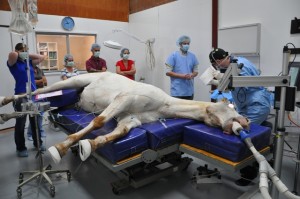
A minimum of 3 people are involved in each procedure – an anaesthetist, a theatre nurse, a lead surgeon and sometimes a surgical assistant. The majority of surgical procedures at Belvoir Equine Hospital are performed by Dr. David Rutherford.
David who has 20 years experience in the operating theatre and is a Recognised Specialist in Equine Surgery. Our dedicated equine operating theatre and induction / recovery room (fully padded walls and floor) are fully equipped and ready to tackle routine and emergency operations.
Most people agree, that seeing one of our equine friends on the surgery table can be a stressful experience – but most people don’t understand, that the induction and recovery from general anaesthesia is one of the most risky times for such a large, heavy patient. The induction box at BEC is specially designed to minimise these risks, it has – heavily padded walls and floor, it is temperature controlled, with a small window for safely giving reassuring words, to the recovering patient – it makes induction and recovery as safe as possible. Horses are transported into surgery by an overhead gantry, which allows them to be quickly and smoothly lifted onto the surgical table.
A broad range of equine surgeries are performed at BEC. These range from arthroscopy (keyhole joint surgery), colic surgery and correction of limb deformities to eye surgeries, bone curettage and cryptorchid surgeries. In addition we perform a range of upper respiratory tract surgery (wind operations). Each surgery is run by one of our qualified equine veterinarians utilising a range of monitoring equipment, echocardiographs and pulse oximetry. Our surgery is also used by visiting specialists where required by our clients.
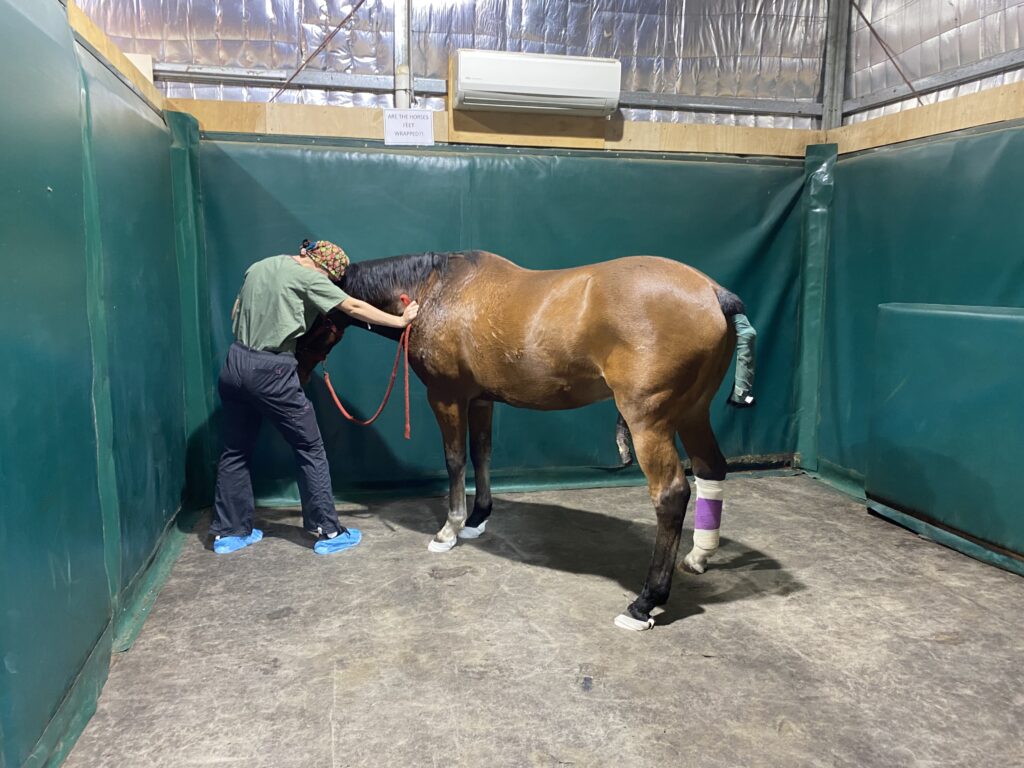
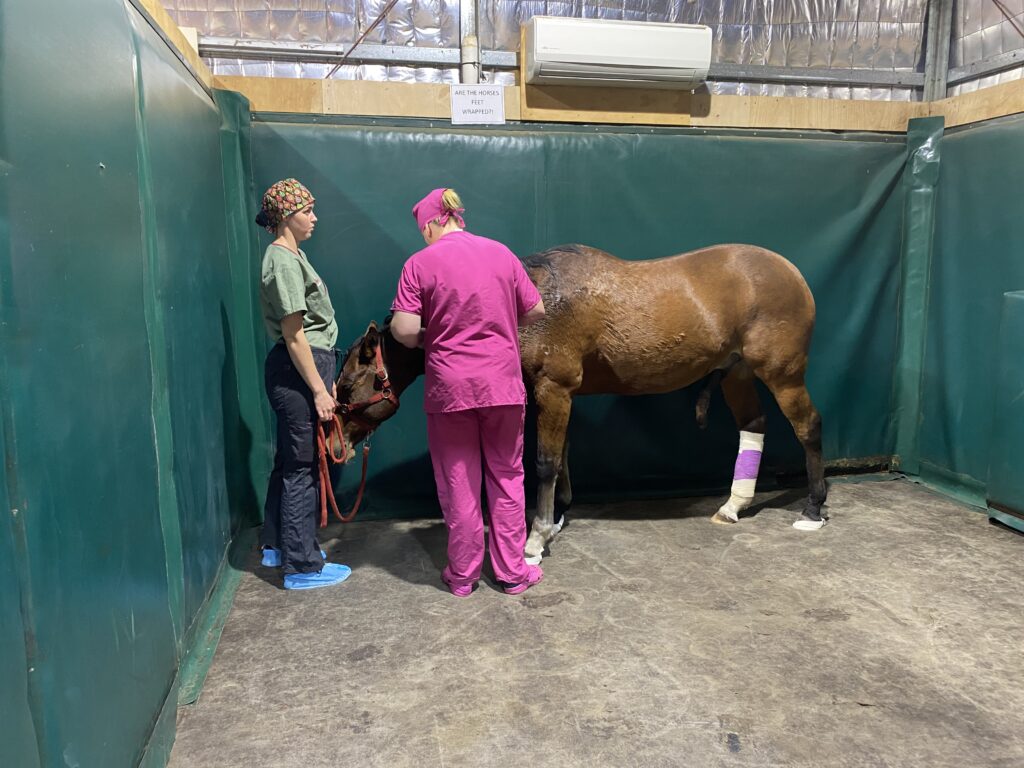
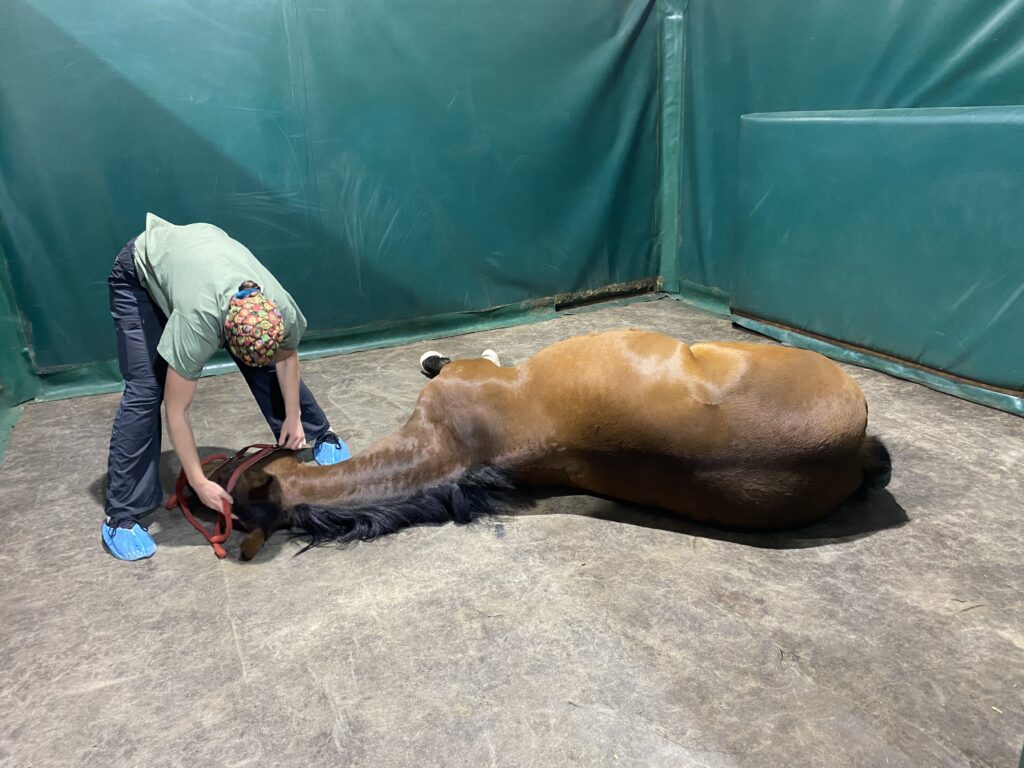
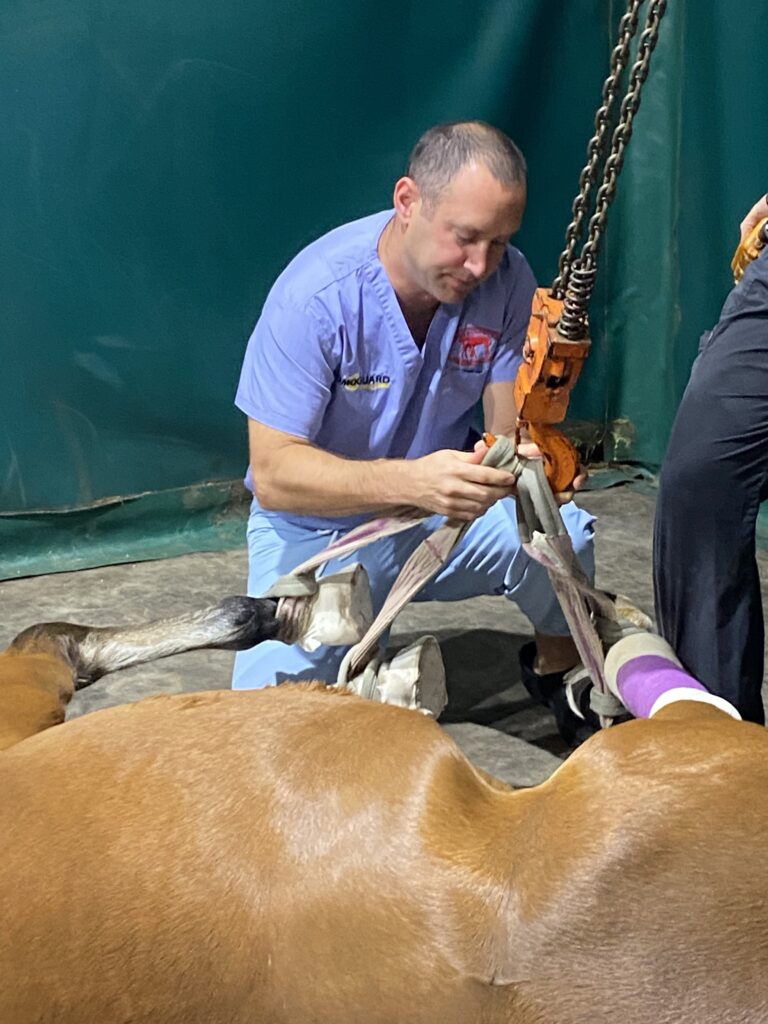
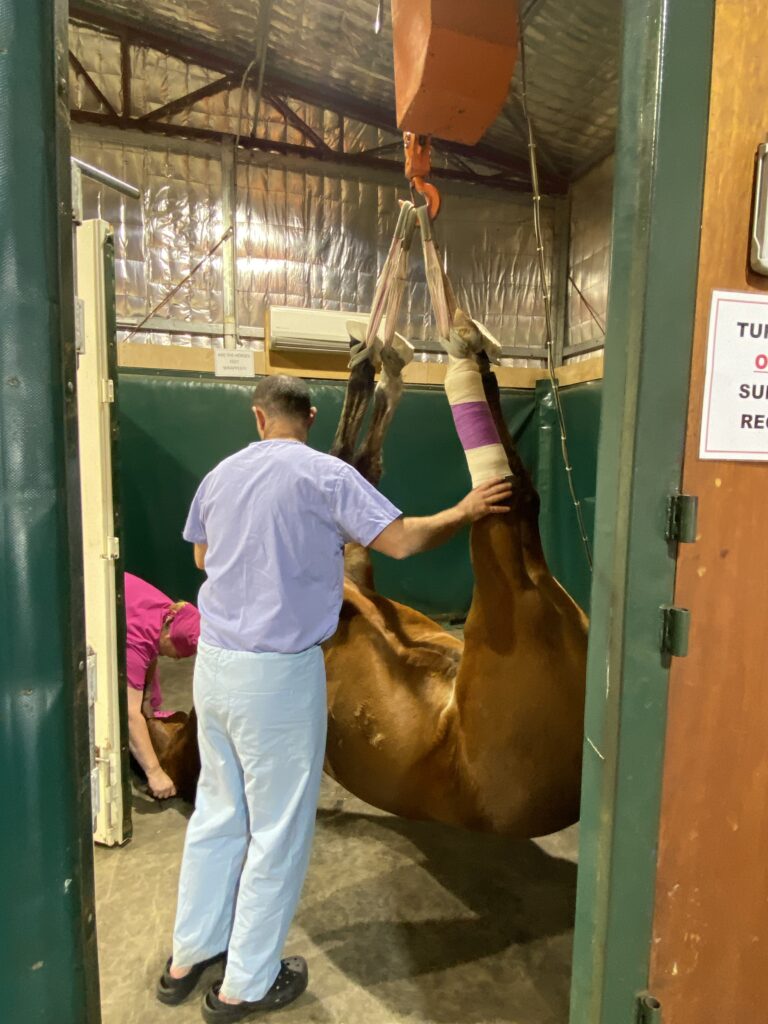
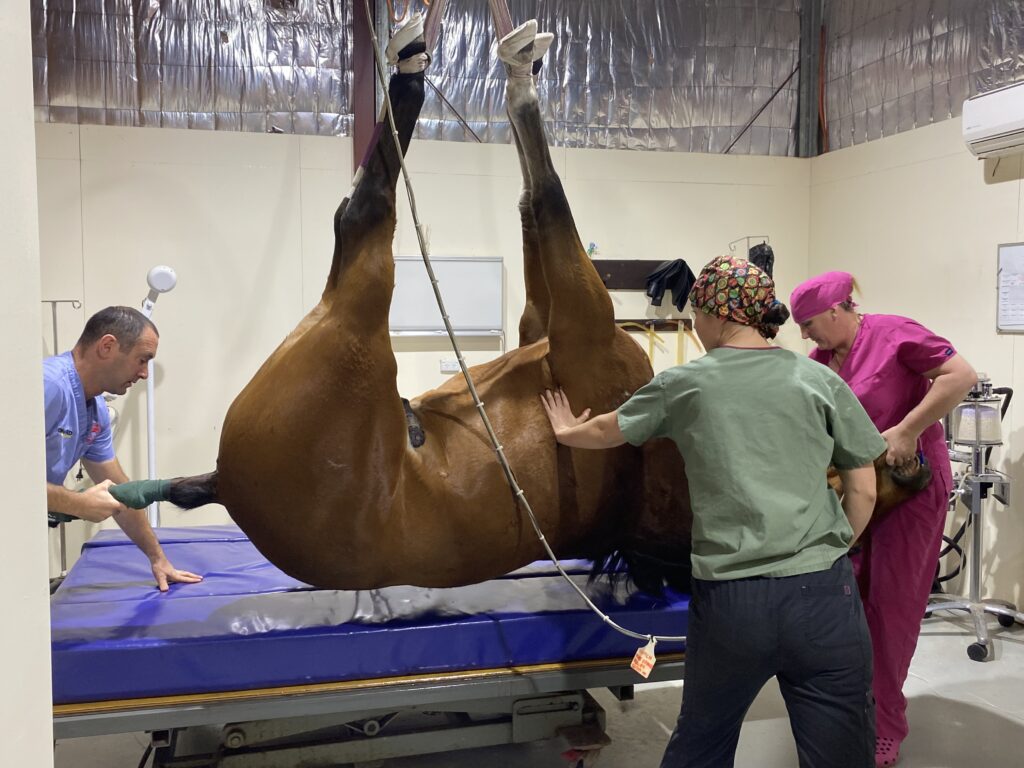
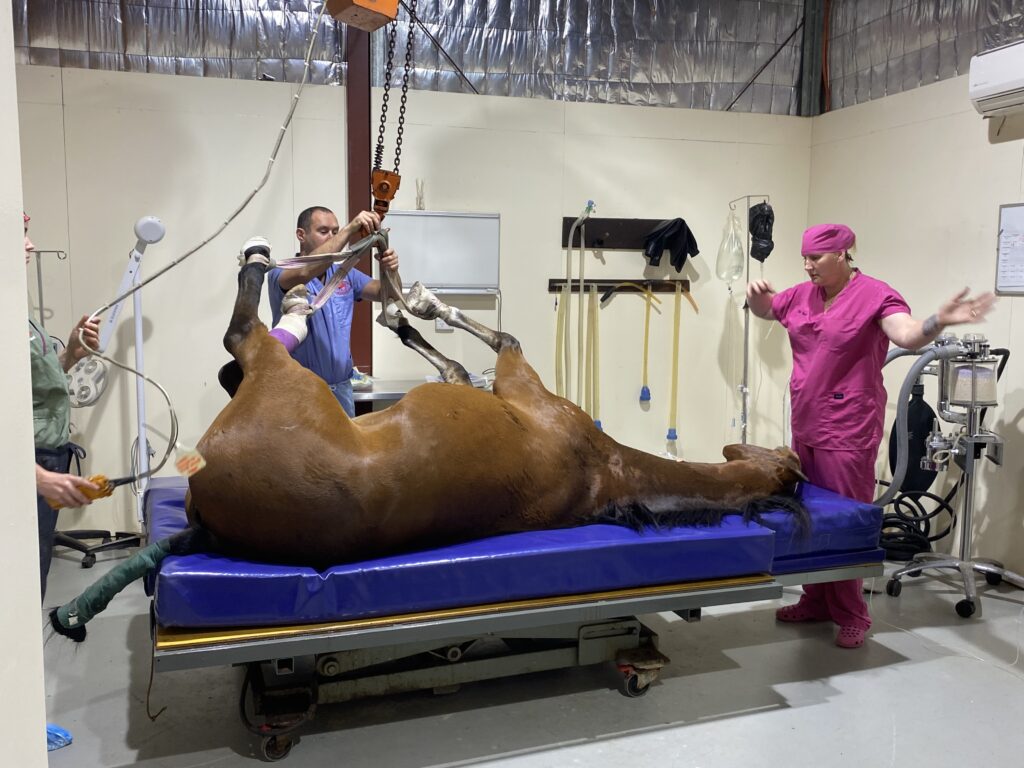
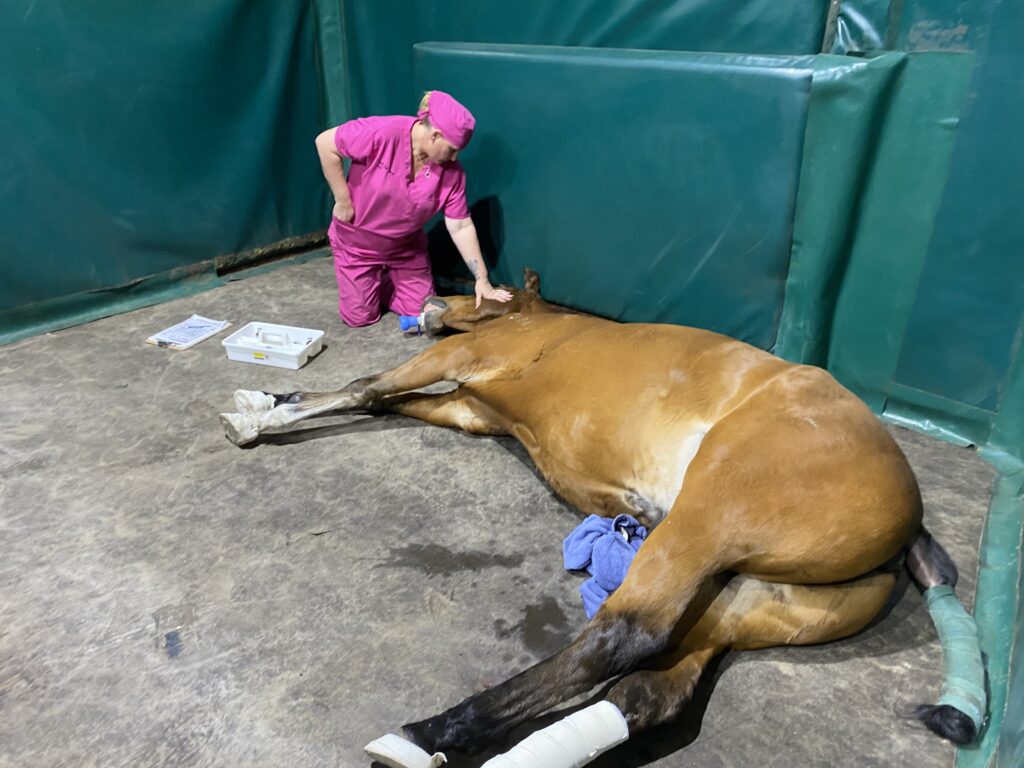
Types of Surgeries
Arthroscopy or “key hole” surgery has revolutionized joint surgery in both humans and horses. In horses it is routine to remove chip fractures, debride OCD lesions, lavage infected joints and assist in repair of damaged tendons and ligaments. The minimally invasive approach allows patients to recover quickly with minimal scarring and optimal return of joint function.
Since injuries are often caused by trauma every orthopaedic surgical case is different and often present as emergencies. Our surgical team is prepared for every eventuality of wounds and fractures, but also for the non-emergencies such as growth deformities in young stock, neurectomies and correction of kissing spines.
Laparoscopy is “key hole” surgery of the abdomen. It is usually performed in the standing sedated horse to remove retained testicles (rigs) or diseased ovaries. A camera and instruments are passed into the abdomen through small flank incisions removing the requirement for a large opening into the lower abdomen and therefore reducing patient discomfort and time to return to exercise considerably.
We regularly perform a wide variety of procedures to improve breathing in horses with airway abnormalities. The most common procedures include “tie-back” or “hobday” surgeries for horses with paralysed larynx (roarers), soft palate surgeries and sinus surgery.
Colic is a very common problem and one of the leading causes of death in horses, especially as they age. Most colic cases resolve following medical treatment, but sometimes if blockages or twists occur much more intensive therapy or surgery is required. In recent years advances in surgical techniques and post-surgical intensive care have greatly improved outcomes for colic surgery. Around 70-80% of horses that have such surgery survive to be discharged from the hospital and most of those return to their full athletic potential.
Post operative care is as important as successful surgery. We have a team of experienced internal medicine clinicians and dedicated nursing staff to monitor and manage these patients around the clock which is vital to ensure the best possible outcome for your horse.
Traditionally most surgical procedures in horses were performed under general anaesthesia but, due to the large size of most equine patients, this is not without risk. In the past decade advances have been made that allow many procedures previously performed under general anaesthesia to now be performed in the standing sedated patient using local anaesthetic techniques. This reduces the risk to the patient and also the cost of the procedure.
Procedures commonly performed under standing sedation at Belvoir Equine Clinic include
⦁ Debriding and suturing traumatic wounds
⦁ Kissing spines surgery
⦁ Enucleation (removal of a badly damaged eye)
⦁ Laser surgery to remove skin tumours including sarcoids and melanomas
⦁ Removal of fractured splint bones
⦁ Infected cheek tooth extraction
⦁ Removal of keratoma – a hard tumour on the inside of the hoof capsule
⦁ Tendon and ligament cutting procedures – e.g. to correct locking stifles or flexural deformities or to treat strains to the annular and supraspinous ligaments.
⦁ Laparoscopy
